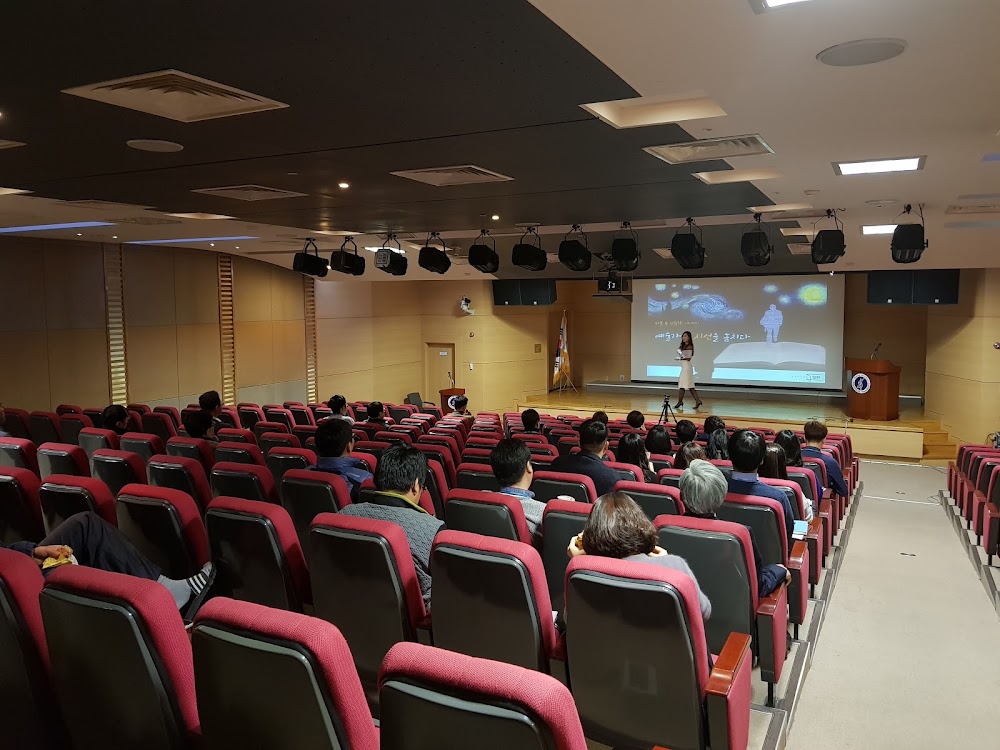Gongju National Museum (공주국립박물관)
Overview
Located in the enchanting city of Gongju, embraced by the warm surroundings of Daejeon, South Korea, Gongju National Museum stands as a vibrant testament to the nation’s rich historical and cultural heritage. A must-visit for travelers in the region, this museum offers an immersive exploration of Korea's illustrious past, making it an ideal destination for history buffs, culture enthusiasts, and curious minds alike.
Established in 1975, the museum houses an impressive collection of artifacts primarily from the Baekje Kingdom (18 BCE – 660 CE), one of the esteemed Three Kingdoms of Korea. Renowned for its advanced culture, significant historical milestones, and exquisite craftsmanship, Baekje's legacy is beautifully showcased within the museum's walls. Notably, the museum features a remarkable collection from the Tomb of King Muryeong, a Baekje ruler whose burial site was uncovered near Gongju in 1971. This discovery unveiled numerous invaluable relics, now preserved and exhibited, inviting visitors to glimpse into the flourishing civilization of Baekje.
Upon entering the museum, guests are welcomed by the elegantly curated Main Hall, which showcases permanent exhibits of stunning crown ornaments, intricate jewelry, formidable weaponry, and artisanal pottery. Each artifact is meticulously detailed, telling compelling stories of a bygone era. Among the highlights are the golden diadem ornaments, crafted with precision and intricate designs that reflect the sophistication of Baekje artisans. The displayed weapons and armors also convey the resilience and valor of Baekje warriors, enriching the narratives of this historic civilization.
A standout feature for many visitors is the life-size replica of King Muryeong’s tomb, which offers a captivating experience of stepping into an ancient royal burial site. This immersive replica allows travelers to appreciate the grandeur and reverence with which the Baekje people honored their royalty. The meticulous attention to detail in both the construction and decoration of the tomb reveals much about the technological advancements and artistic sensibilities of the time.
Beyond its impressive galleries, the museum provides interactive experiences and educational programs. These include guided tours in various languages, multimedia presentations, and workshops that engage visitors with traditional Korean arts and crafts. Families will especially enjoy the hands-on activities in the Children's Museum section, making history accessible and engaging for young explorers.
The museum grounds are equally captivating, featuring beautifully manicured gardens that embody traditional Korean landscaping principles. Throughout the seasons, these gardens bloom with vibrant foliage, creating a serene backdrop perfect for contemplation and photography. Visitors can also enjoy cultural performances and traditional music recitals held amidst the scenic gardens, offering a rich, multi-sensory experience of Korea’s cultural tapestry.
In addition to its cultural and educational significance, the museum is strategically located near other historic sites in Gongju, such as Gongsanseong Fortress and Magoksa Temple. After exploring the museum, tourists can seamlessly extend their historical adventure by visiting these nearby landmarks, each offering unique insights into the region's heritage.
Architecturally, the museum is a marvel that harmonizes traditional Korean aesthetics with modern design. Its structure mimics the elegant rooflines and courtyards of traditional Korean palaces, paying homage to the nation’s architectural heritage while comfortably accommodating detailed exhibits across a spacious area.
Gongju National Museum does more than merely display artifacts; it cultivates a profound connection between the present and the past. It enables foreign visitors to grasp the historical and cultural fabric that has shaped modern Korea. Whether you harbor a fleeting curiosity about ancient civilizations or a deep passion for historical research, this museum promises a comprehensive and enriching experience that is both educational and soul-stirring.
In summary, visiting Gongju National Museum is akin to stepping back in time to an era marked by regal splendor, artistic achievement, and cultural richness. It stands as a tribute to Korea's illustrious history and a testament to the enduring legacy of the Baekje Kingdom. For anyone exploring Daejeon, this museum is not just a destination but a journey through time, artistry, and the essence of Korean heritage.



